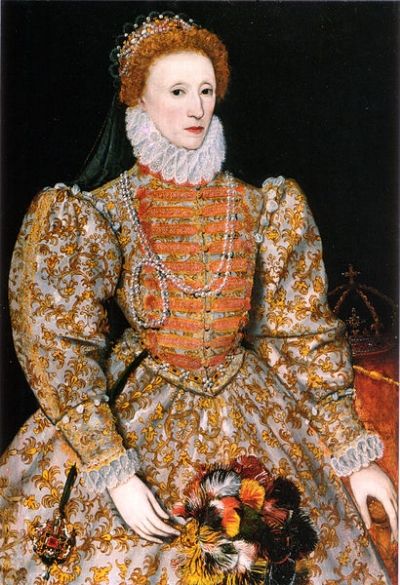Ireland had never been a part of the Roman Empire and following the Norman conquest of Britain in 1066, the English began their attempts to conquer the island. However, the English armies which had been sent to Ireland since the days of the Norman invasion had not been terribly successful in actually conquering the island. The troops would arrive, put down a rebellion or straighten out an Irish king, and then go home. For all of the riches and opportunities that Ireland had to offer, the English settlers did not find it to be a friendly place. With the instability, the English settlers tended to settle around Dublin where they felt safe, to marry and merge with their Irish neighbors, or to simply pack up and go back to England.
Regardless of what the English monarchs might have claimed, Ireland still belonged to the Irish. During the Tudor Monarchy (1534-1603), Ireland became important to the English. In his book Ireland: A Short History, Joseph Coohill explains:
“There were several reasons why the Tudor monarchs wanted to control Ireland, but the most important was the desire to prevent the country from being used by someone trying to usurp their power. They also needed Ireland for the expansion of English trade overseas, and as a base to challenge the power of the Spanish, who were building a maritime empire.”
In the sixteenth century, Queen Elizabeth I, who reigned from 1558 to 1603, felt that she had had enough of the Irish instability. Knowing that she couldn’t conquer the Irish militarily, she tried another approach: the plantation system. From the viewpoint of the sixteenth-century English policy-makers, placing English settlers in Ireland would provide a model of civility and religion for the “wild” and “barbaric” Irish natives. The Irish were predominantly Catholic and were often hostile to the authority of the English crown. The English feared that the Catholic Irish would form an alliance with Catholic Spain.
England at this time was the leading Protestant power in Europe. With regard to Queen Elizabeth I, Séamas Mac Annaidh, in his book Irish History, writes:
“Elizabeth I is generally regarded as one of the greatest English monarchs. As Queen of England, she renewed royal supremacy over the Church.”
Joseph Coohill writes:
“Elizabeth tried to establish Protestantism throughout her kingdoms, but met a great deal of resistance in Ireland.”
In their book Ireland: A Concise History, Máire and Conor Cruise O’Brien report:
“Elizabeth herself had no enthusiasm for conquering Ireland—a costly and discouraging task—but her situation required this to be done.”

Land was the basis of the plantation system: the Crown simply divided the land into blocks of 12,000, 8,000, 6,000, or 4,000 acres. Part of this land was already owned by England and when more was needed, the Crown simply took it from the Irish. Part of the lands came from estates which had been confiscated after the Second Desmond Rebellion (1579-1583) in what are now counties Limerick, Cork, Kerry, and Tipperary.
Land, however, needs to be productive and this means that it has to have people who will work it. As a part of the plantation system, Undertakers (wealthy English colonists who “undertook” the task of importing tenants) were to run the land. Their job was simple: find non-Irish tenants who would work the land. Plantation land, however, could not be leased to the Irish. The Undertakers sought out families in England and Wales who would then be shipped to Ireland. According to this scheme, Ireland would soon be filled with happy, industrious English farmers who would bring stability and Protestantism to the island.
The Elizabethan plantation system didn’t work. The Undertakers struggled to get English families to move to Ireland and when they failed, they rented the land to the Irish, which defeated the basic idea of keeping the Irish off the land.
While they had initially projected that 15,000 colonists would be settled on the plantations, by 1589 there were only 700 English tenants, which placed the total English population at about 3,000—far below their projected goal.
A second major problem involved the land. Some of the lands which had been granted to the Undertakers was taken away from them when the Irish lords appealed.
Finally, the Undertakers were to build new towns and provide for their defense. In many cases, the new English settlers were spread out and detachments of English soldiers were assigned to protect them. However, the detachments were withdrawn in the 1590s. When the Irish rebellion against English rule arrived in 1598, most of the settlers were chased off their land without a fight, many returning to England.
History 101/201
This series explores various historical topics. History 201 is an expansion of an earlier essay. More from this series:
History 201: The Irish Rebellion of 1641
Irish History: The Ulster Plantation
Irish History: Catholic Emancipation
Irish History: Response to the Great Famine
Irish History: The Origins of the Orange Order
Irish History: The Protestant Ascendancy
Irish History: The Rebellion of 1798
Irish History: Colm Cille, Copyright and Exporting Christianity